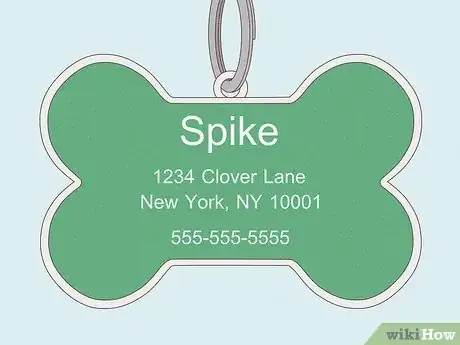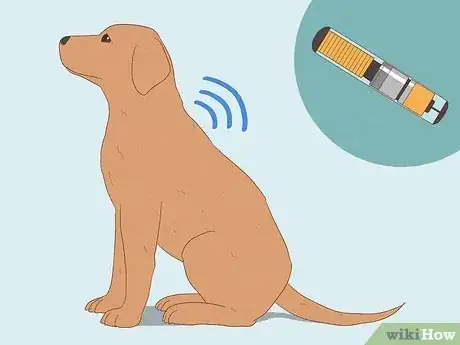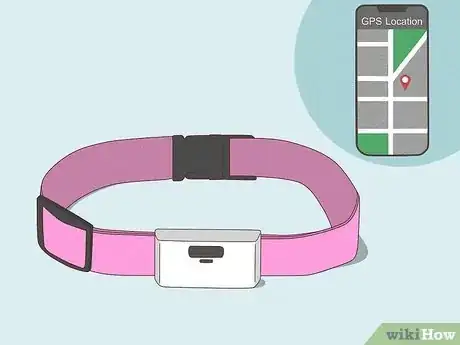This article was co-authored by wikiHow staff writer, Amber Crain. Amber Crain has been a member of wikiHow’s writing staff for the last six years. She graduated from the University of Houston where she majored in Classical Studies and minored in Painting. Before coming to wikiHow, she worked in a variety of industries including marketing, education, and music journalism. She's been a radio DJ for 10+ years and currently DJs a biweekly music program on the award-winning internet radio station DKFM. Her work at wikiHow supports her lifelong passion for learning and her belief that knowledge belongs to anyone who desires to seek it.
There are 7 references cited in this article, which can be found at the bottom of the page.
This article has been viewed 3,114 times.
Learn more...
If your dog ever runs off or gets lost, having the right information on their tag can help get them back home to you a lot faster. Dog tags have limited space, though, which means you have to be choosy about what you include! So, what's the best approach? In this article, we'll explain exactly what you need to put on your dog's tag to keep them safe if you get separated. We'll also touch on where to buy a tag and share a few other safety tips for protecting your furry friend.
Things You Should Know
- Put at least one phone number on the tag so anyone who finds your lost dog can contact you immediately.
- Include your dog’s name on the tag so good Samaritans can gain your lost dog’s trust and return them to you quickly.
- If your dog has medical issues, add a brief phrase like, “Needs daily medication" to create more urgency around their return.
Steps
References
- ↑ https://www.americanhumane.org/fact-sheet/identification-tags-microchips/
- ↑ https://www.bluecross.org.uk/advice/dog/how-to-protect-against-dog-theft
- ↑ https://www.dailydogstuff.com/what-to-put-on-dog-tag/
- ↑ https://www.foundanimals.org/5-things-you-didnt-know-about-external-pet-id/
- ↑ https://www.bluecross.org.uk/advice/dog/how-to-protect-against-dog-theft
- ↑ https://www.cvpets.com/post/what-should-i-put-on-my-pet-s-id-tag
- ↑ https://www.cvpets.com/post/what-should-i-put-on-my-pet-s-id-tag
- ↑ https://www.foundanimals.org/5-things-you-didnt-know-about-external-pet-id/
- ↑ https://www.bluecross.org.uk/advice/dog/how-to-protect-against-dog-theft


































































